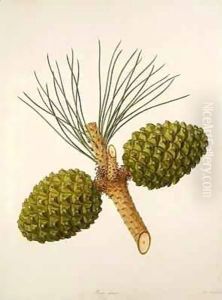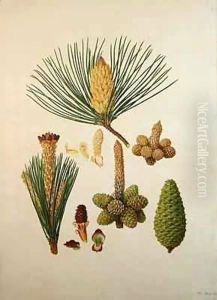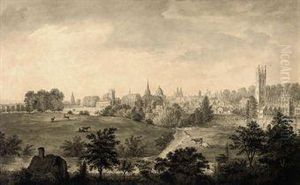Ferdinand Bauer Paintings
Ferdinand Bauer was a renowned Austrian botanical illustrator, born on January 20, 1760, in Feldsberg, now Valtice, Czech Republic. Bauer is often considered one of the greatest natural history artists of all time, alongside his brother Franz Bauer. He developed an intricate and accurate style of illustration that has had a lasting impact on botanical and zoological studies. His early interest in plants and natural sciences was nurtured in the gardens of the family’s home and further developed through his studies under Norbert Boccius, the abbot of the local monastery.
In 1786, Ferdinand Bauer embarked on his first major scientific expedition aboard the ship HMS Bounty, but due to the infamous mutiny aboard the Bounty, the expedition was aborted, and Bauer returned to England. Despite this setback, Bauer's career did not falter. In 1801, he joined Matthew Flinders on his voyage to Australia aboard the HMS Investigator. This journey proved to be a pivotal moment in Bauer's career, as it allowed him to create detailed illustrations of Australian flora and fauna, many of which were previously unknown to European science.
Bauer's work in Australia culminated in the production of 'Illustrationes Florae Novae Hollandiae,' a seminal work in the field of botanical illustration. His method of using a complex color-coding system to record colors in the field, which he later decoded to paint his illustrations, was innovative and allowed for a high degree of accuracy in his work. This technique was crucial in an era before color photography and helped to convey the rich biodiversity of Australia to a European audience.
After his return to Europe in 1805, Bauer settled in London for a time, working on his Australian illustrations. However, he eventually moved back to Vienna, where he spent the remainder of his life working at the Belvedere Palace, continuing his illustration work until his death on March 17, 1826. Bauer's legacy is not only in the beauty of his illustrations but also in their scientific accuracy, which continues to be of importance to botanists and zoologists. His work is a testament to the vital role of art in the exploration and documentation of the natural world.











